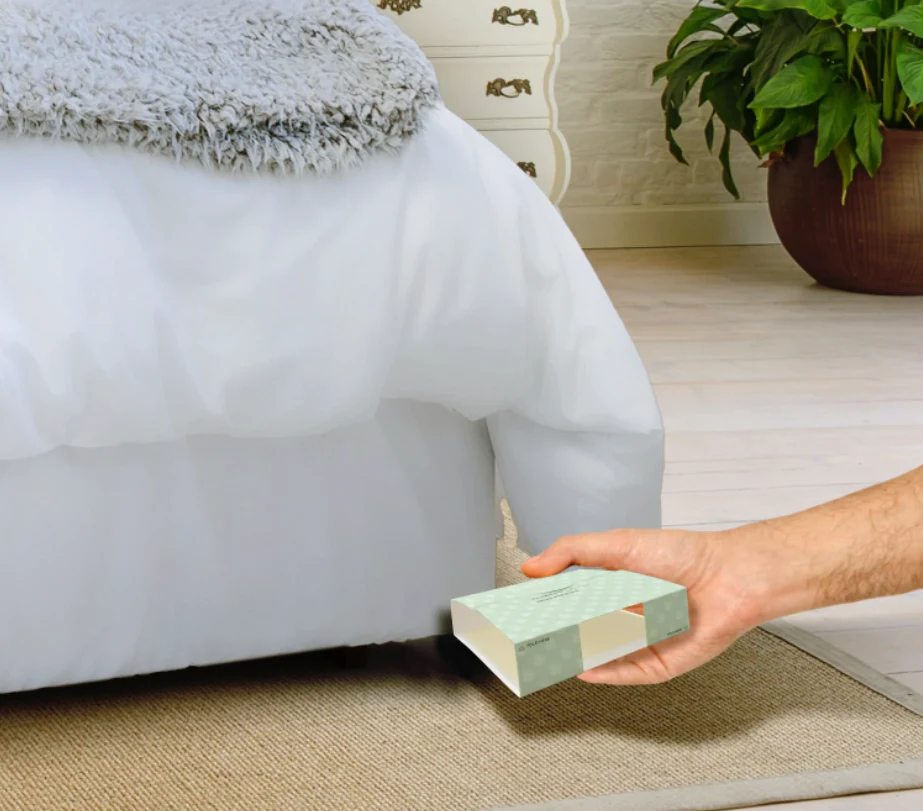Bed bugs are pesky creatures that can cause an enormous amount of discomfort and distress. They feed on human blood and they can be incredibly hard to get rid of. Thankfully, there are a few solutions for bed bugs removal and two of the most popular options are bed bug sticky traps and bed bug sprays. Each of these solutions has its own pros and cons, so it’s important to understand the difference between the two before you make a decision.
Design
Bed bug sticky traps are small rectangular traps that are covered with a special adhesive on one side that is designed to capture any bed bugs that come into contact with it. These traps are placed around the bed frame, headboard, and other areas of the bedroom where bed bugs may be present. The adhesive on the traps is designed to be strong enough to hold the bed bugs once they have been caught, so they are unable to escape.
Bed bug sprays, on the other hand, are designed to kill bed bugs by poisoning them or clogging their breathing pores. These sprays are usually applied in areas where bed bugs may be present and they should be used according to the directions given on the packaging. Bed bug sprays can be dangerous when used incorrectly, so it’s important to read the instructions carefully and follow the safety guidelines provided.
Motive
The biggest difference between bed bug sticky traps and bed bug sprays is that the former is designed to capture the bugs whereas the latter is designed to kill them. Bed bug sticky traps can be used to get an idea of how many bed bugs are in an area and where they are hiding, whereas bed bug sprays are meant to directly tackle the problem.
Price
Another difference between the two solutions is that sticky traps are often less expensive than bed bug sprays. Bed bug sprays can cost quite a bit of money, whereas sticky traps are relatively inexpensive and can be reused multiple times.
Composition
Finally, bed bug sticky traps are designed to be non-toxic, whereas bed bug sprays can contain chemicals and other agents that can be hazardous if inhaled or come into contact with the skin. It’s important to read the packaging of any bed bug spray you are considering purchasing to make sure it is safe to use.
Which Is Better Bed Bug Sticky Traps Or Bed Bug Sprays?
When deciding between bed bug sticky traps and bed bug sprays, it’s important to consider your needs. If you’re looking for an easy, cost-effective option, sticky traps may be the right choice. They don’t contain any chemicals and can be placed in strategic areas to help identify the presence of bed bugs. On the other hand, if you’re dealing with a large bed bug infestation, using an insecticide spray may be the most effective way to get rid of the bugs.
No matter which option you choose, it’s important to take preventative measures to make sure that the bed bugs don’t return. This includes washing and changing bedding regularly, vacuum cleaning surfaces, and sealing cracks and crevices in the walls and furniture.
Bed bug sticky traps and bed bug sprays are both effective bed bug treatment supplies for bed bugs. The best option will depend on the severity of the infestation and the level of risk you’re willing to take. Carefully consider your needs and consult a professional pest control expert before making a decision.
Summing up
In conclusion, bed bug sticky traps and bed bug sprays are two different methods for getting rid of bed bugs. Sticky traps are used to capture and monitor bed bugs, while sprays are used to treat existing infestations. Both of these methods can be effective when used in combination with each other; however, it is important to understand the difference between them and use the right method for your particular situation.






 StableDiffusion
StableDiffusion Photo by
Photo by  Photo by
Photo by 
 full parking
StableDiffusion
full parking
StableDiffusion









